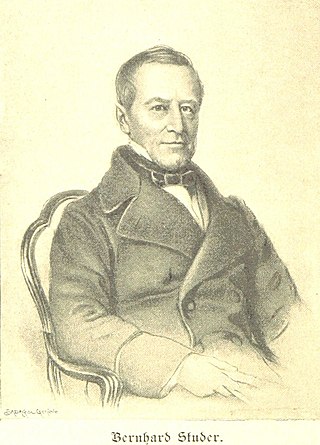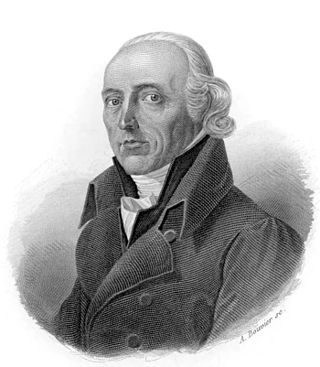| |||||
| Decades: | |||||
|---|---|---|---|---|---|
| See also: | |||||
The following is a list of events, births, and deaths in 1856 in Switzerland .
| |||||
| Decades: | |||||
|---|---|---|---|---|---|
| See also: | |||||
The following is a list of events, births, and deaths in 1856 in Switzerland .

The Linth is a Swiss river that rises near the village of Linthal in the mountains of the canton of Glarus, and eventually flows into the Obersee section of Lake Zurich. It is about 50 kilometres (31 mi) in length.

Glarus is the capital of the canton of Glarus in Switzerland. Since 1 January 2011, the municipality of Glarus incorporates the former municipalities of Ennenda, Netstal and Riedern.

Prof Bernhard Studer HFRSE, was a 19th-century Swiss geologist.

Arnold Escher von der Linth was a Swiss geologist, the son of Hans Conrad Escher von der Linth (1767–1823).

Albert Heim was a Swiss geologist, noted for his three-volume Geologie der Schweiz.

Arnold Henry Guyot was a Swiss-American geologist and geographer.

During the French Revolutionary Wars, the revolutionary armies marched eastward, enveloping Switzerland in their battles against Austria. In 1798, Switzerland was completely overrun by the French and was renamed the Helvetic Republic. The Helvetic Republic encountered severe economic and political problems. In 1798 the country became a battlefield of the Revolutionary Wars, culminating in the Battles of Zürich in 1799.

Johann Gottfried Ebel was the author of the first real guidebook to Switzerland.

The Kunsthaus Zürich is in terms of area the biggest art museum of Switzerland and houses one of the most important art collections in Switzerland, assembled over time by the local art association called Zürcher Kunstgesellschaft. The collection spans from the Middle Ages to contemporary art, with an emphasis on Swiss art.

Count Hermann Alexander de Pourtalès was a Swiss sailor who competed in the 1900 Summer Olympics.

Hans Conrad Escher von der Linth was a Swiss scientist, artist, and politician. He headed the "Great Council of Switzerland" in 1798, a period of French occupation. He also published a survey of the Swiss Alps and is perhaps most significant for his work in the project to "tame" the Linth river. His son was geologist Arnold Escher von der Linth.

The Glarus thrust is a major thrust fault in the Alps of eastern Switzerland. Along the thrust the Helvetic nappes were thrust more than 100 km to the north over the external Aarmassif and Infrahelvetic complex. The thrust forms the contact between older (Helvetic) Permo-Triassic rock layers of the Verrucano group and younger (external) Jurassic and Cretaceous limestones and Paleogene flysch and molasse.

The Neuchâtel Crisis or Neuchâtel Affair of 1856–1857 was a diplomatic crisis between Prussia and Switzerland regarding the rights of the King of Prussia to the Swiss canton of Neuchâtel.
The Guards Rifles Battalion was an infantry unit of the Prussian Army. Together with the Guards Ranger Battalion it formed the light infantry within the 3rd Guards Infantry Brigade in the 2nd Guards Division of the Guards Corps. The battalion consisted of four companies.

Lydia Welti Escher, was a Swiss patron of the arts. Lydia Escher was one of the richest women in Switzerland in the 19th century, a patron of the arts who most notably established the Gottfried Keller Foundation.
Georges de Tribolet was a Swiss geologist. He was the older brother of geologist and paleontologist, Maurice de Tribolet (1852–1929).

Jakob Messikommer was a Swiss archaeologist who among others discovered and researched the UNESCO serial site Wetzikon–Robenhausen.

Johann Jakob Hottinger was a Swiss historian. He was a great-grandson of philologist Johann Heinrich Hottinger (1620–1667).
Escher is a surname. Notable people with the surname include: